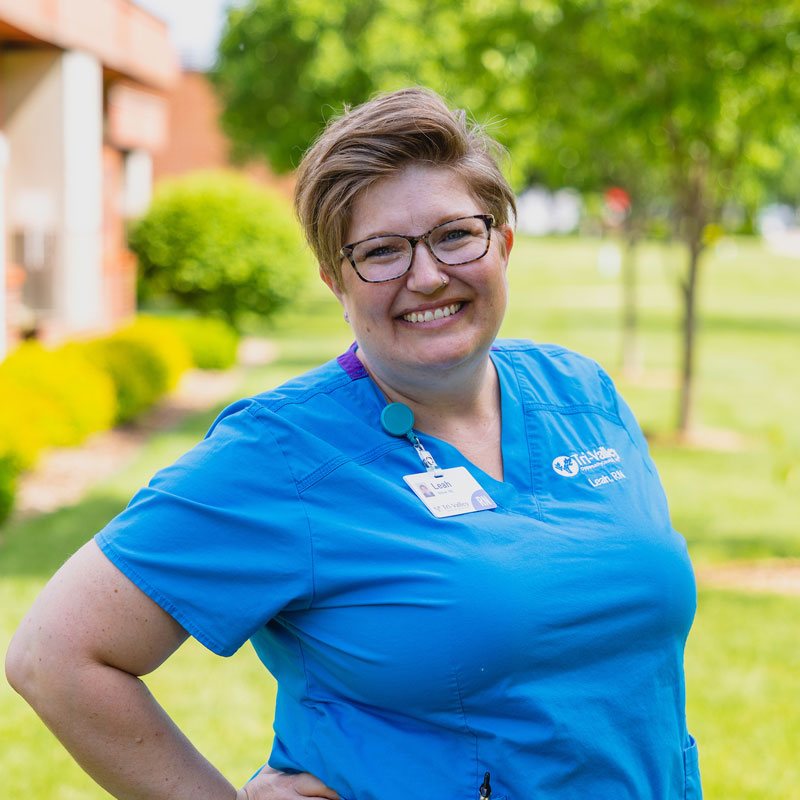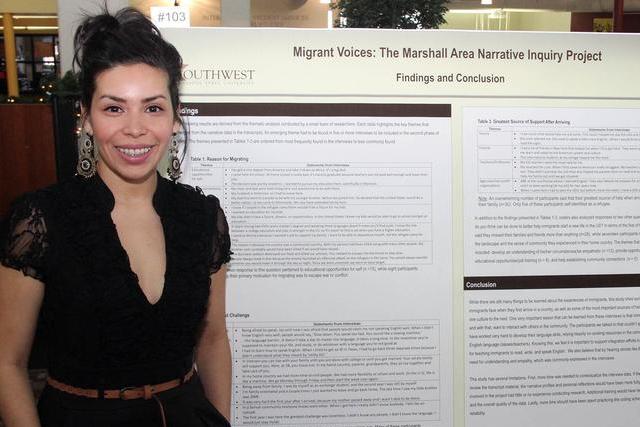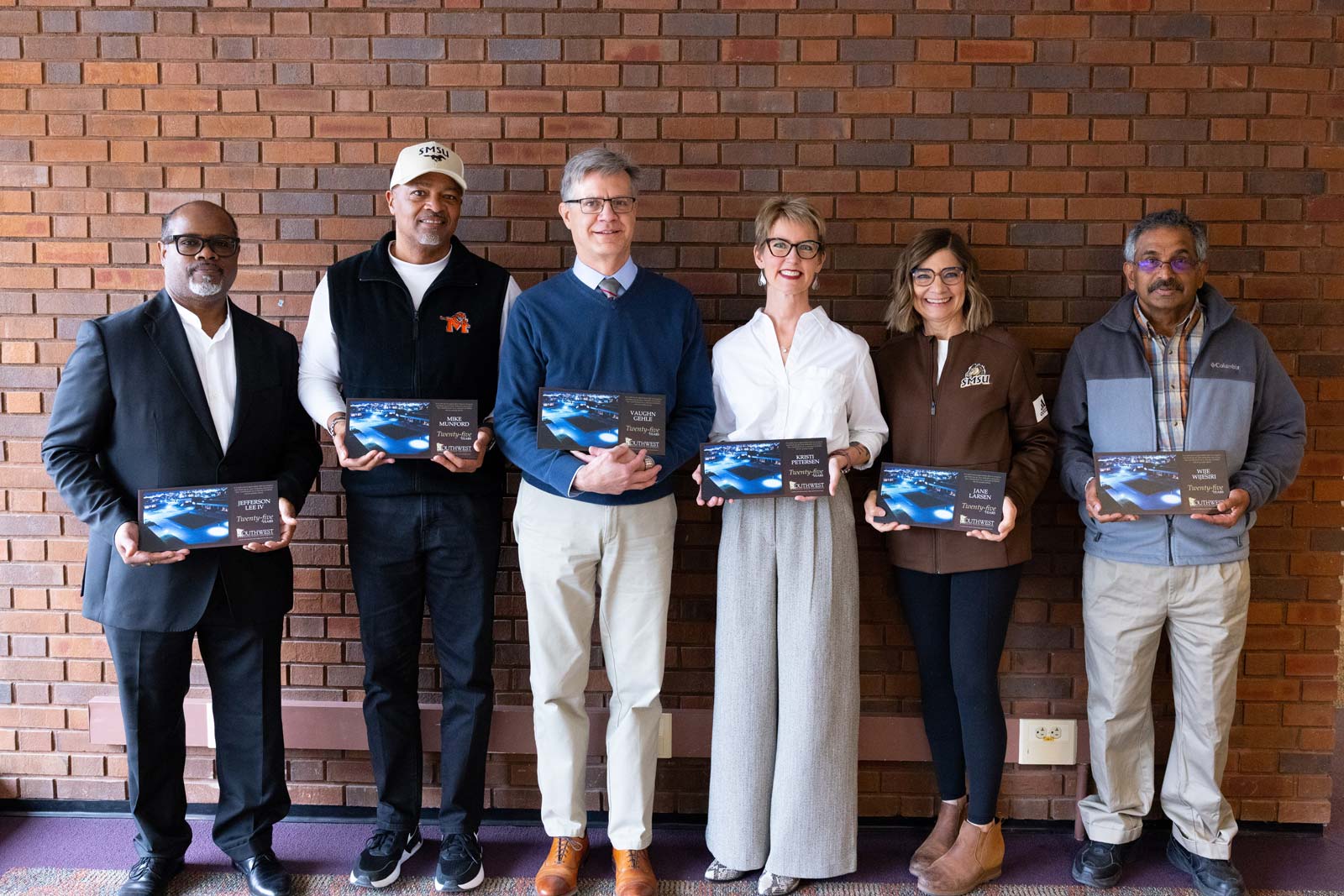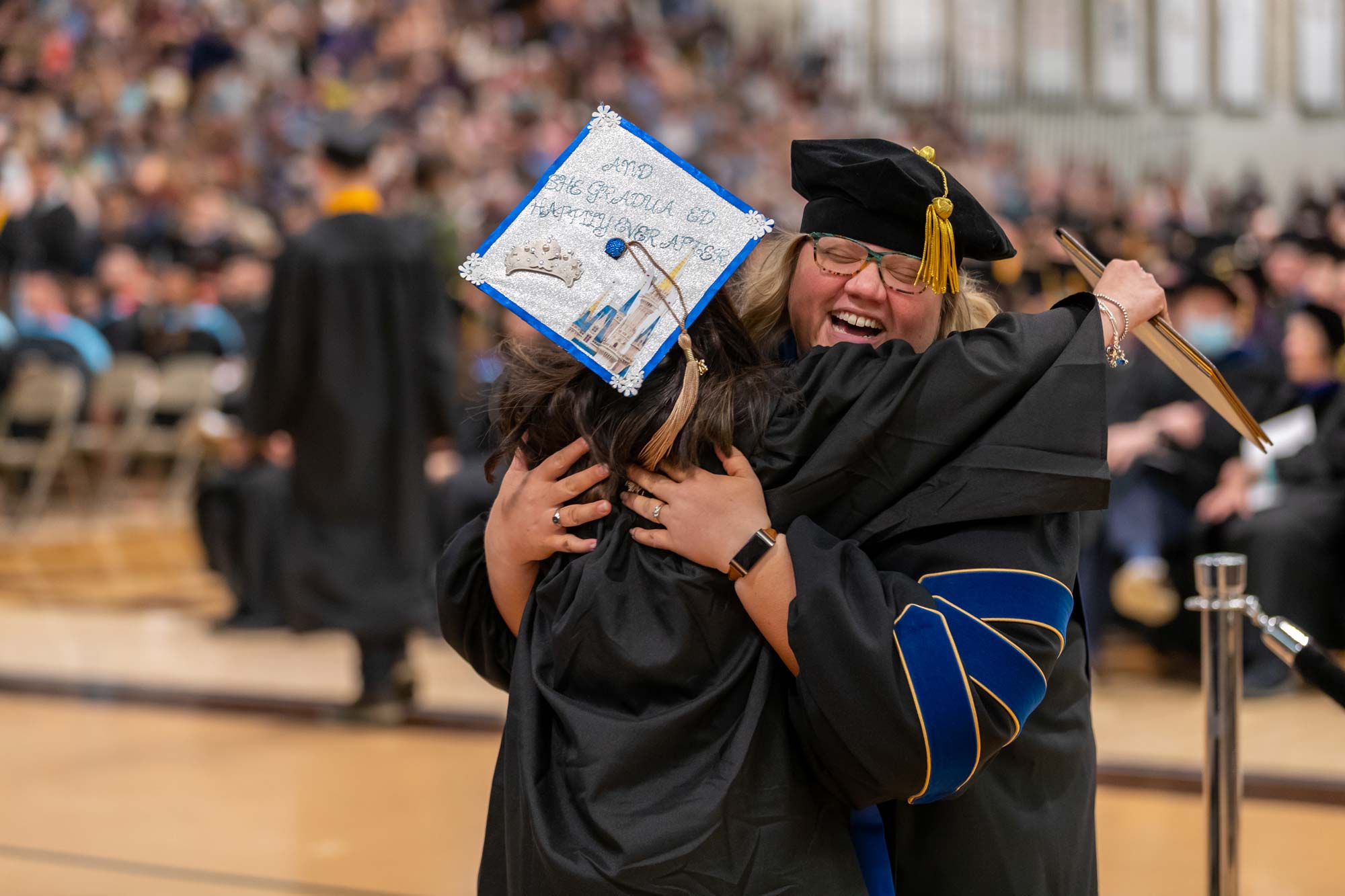Marly Cid Can Empathize with 'Migrant Voices'
Published Wednesday, December 02, 2015
SMSU student Marly Cid can sympathize with the individuals who were interviewed as part of the Migrant Voices project.
She is a graduate assistant (GA) in the Office of Diversity and Inclusion. She received her undergraduate degree in psychology from SMSU, and is in her first year of her MBA program.
Marly was raised in Mexico. When she was six months old, her mother came to the United States, alone, to work. She lived with her grandparents, and it wasn’t until she was 13 years old that Marly joined her mother in the U.S.
“It was difficult at first,” she said. “There was some resentment. At my age then (13), I didn’t understand why she had left. I grew up not having a relationship with my mother, so I had to re-establish that when I came to the United States.”
Marly was an interpreter for the Migrant Voices: The Marshall Area Narrative Inquiry Project. It was coordinated by Associate Professor of Sociology Dr. Kerry Livingston, and students in her Applied Research methods classes participated.
Students interviewed 50 individuals who have migrated to the area within the past 30 years. Their individual stories were featured at the conference. Data from the interviews was also analyzed.
The entire group of stories was located in the open area of the second floor of the Conference Center, and drew a lot of attention during the day.
As an interpreter, Marly translated the interviewer’s questions, posed in English, and listened to the responses, spoken in Spanish, and relayed that information, in English, back to the student questioner. She talked, generally, about one such migrant to the area.
“You have to find the right way to word it so that they can understand,” she said. “On our way to the interview, in the car, she opened up to me about her situation. You want them to be able to trust you — that what they say is being understood.”
Marly graduated from Marshall High School and is happy that her family is now all in Marshall — mother, stepfather, two sisters and two brothers.
“I’ve had experience working with diverse populations,” she said. And her own life situation gives her a unique understanding of those who have chosen to move to the area in search of a better life.
Another student who was a part of the Migrant Voices project is Malik Johnson, a freshman psychology and philosophy double major from Cottage Grove, Minn. His poster dealt with the demographics of the migrants — where they came from, and what were some key circumstances that drove them out of their countries.
“Each is different,” he said. “For instance, the Hmong, many of them came to the U.S. right after the Vietnam War, because they were sympathetic to the U.S. mission and they were being persecuted at home,” he said.
“In Somalia, after the 1990 war, the government disintegrated, and there was a lot of violence. And in Guatemala, they had a 36-year civil war, and then an earthquake in 1976 that devastated the infrastructure (of communities) and affected how people lived their lives.”
In the Migrant Voices project, the largest group of participants came from Southeast Asia, Mexico, Somalia, Kenya and Nigeria.
Many talked about how difficult it is to learn English, and how important, also. Most said they miss their family and friends in their home countries, and want U.S. citizens to perhaps try harder to understand their plight.
As one migrant from Kenya said, “You can’t claim to know the Bible if you haven’t opened it, so you don’t know me if you haven’t taken the time to get to know me.”






